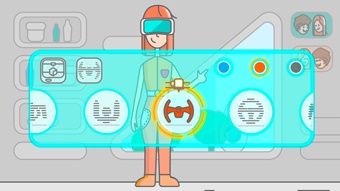3D printing is an amazing thing: every day new inventions appear. But anyone who has tried printing something knows all too well that before the ideal result, there are dozens of failures that are disposed of in the trash, never to be seen again. This leads to a great waste of time and money. Luckily, there are some enthusiasts out there who are thinking about recycling the filament and bringing it back to life.
How it works
UC Berkeley had started integrating 3D printers in education about a decade ago. Since that time the number of machines in the campus has grown to 100, and they generate nearly 600 pounds of plastic trash each year!
Students Nicole Panditi and Scott Silva, the participants of Student Environmental Resource Center in Berkeley, run a 3D Printer Filament Reclamation Project to solve the problem. So here is their recipe: grinding plastic waste in a blender for 20 minutes, then melting it in a heater and adding some new PLA beads. Voila! The new filament is ready to use.
Re-filament industry and environmental problems
Of course, the students from UC Berkeley aren’t the first to worry about waste left over from 3D printing. For example, in January 2014, the ECOCYCLE 3D Cube printer was introduced, which uses recycled plastic instead of filament. There are also some companies like The Plastic Bank or ProtoPrint, which share the same vision.
In the same year, the Recyclebot appears – an open-source hardware device which converts used plastic (like food containers or bottles) into filament, and the Plastic Bank, a non-profit organization that deals with ocean plastic and provides Recyclebots to impoverished communities all over the world. Several companies sell a so-called re-filament, that is made from recycled plastic items. Their way is the same as the one the UC Berkeley students used, but of course, the companies use professional machines instead of a simple blender. Re-filament is growing in popularity, for example, Deltaprintz from Netherlands produce 3D Delta machines, which are printed from re-filament.
But it’s clear that all those recycling machines are quite expensive, and some people just can’t access them. So going back to the heroes of our article, their way of recycling PLA can be used among organizations with a 3D printed trash problem without the need for all the special equipment. As one of the project’s leaders, Nicole says: “It’s my personal goal to reduce inefficiencies in 3D printing so that the tech industry can reach its full beneficial potential without being haunted by mountains of ugly waste.”
Our blog is also available for anyone with interesting story or useful life hacks, just write to us: press@treatstock.com
Mit Freunden teilen:






